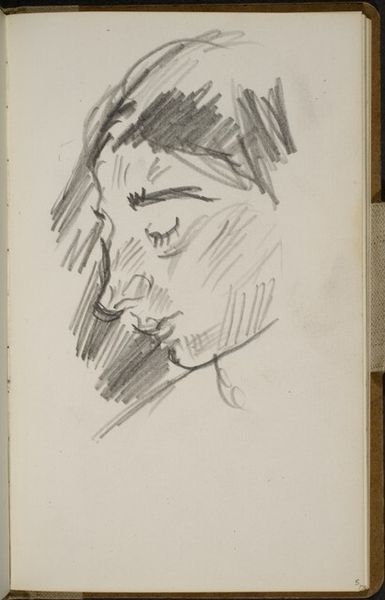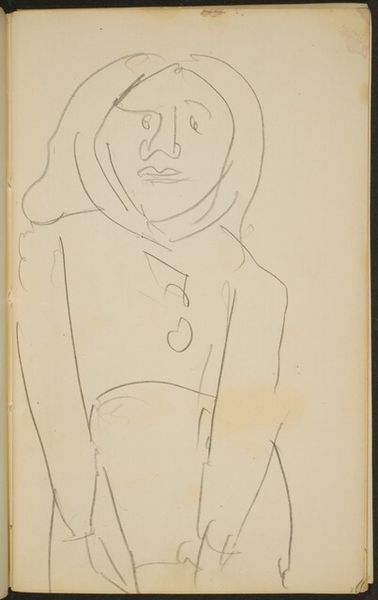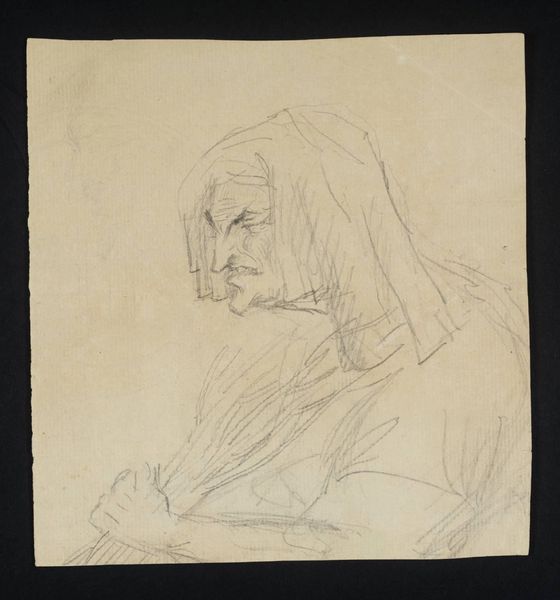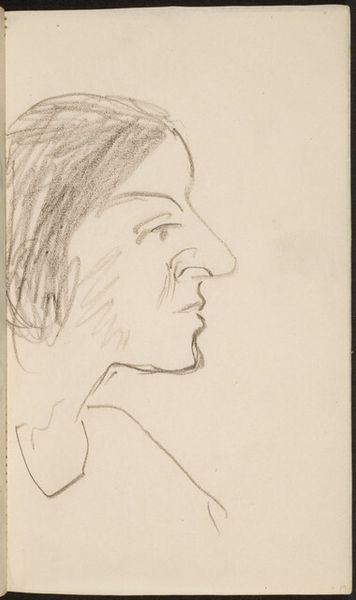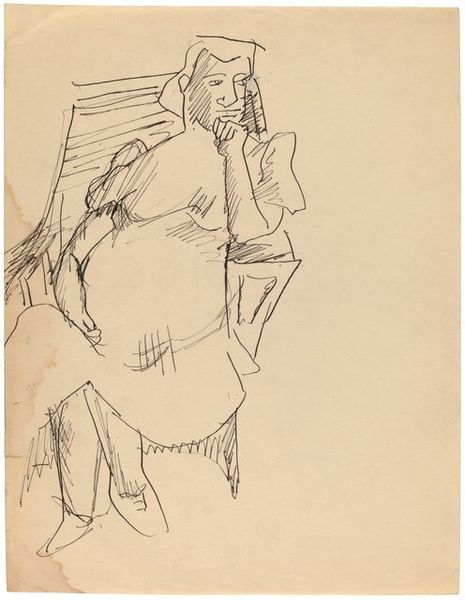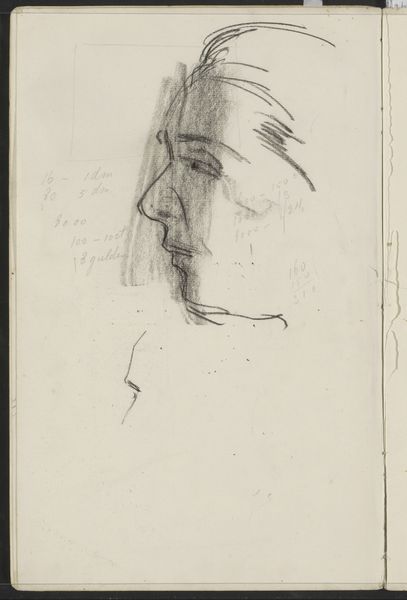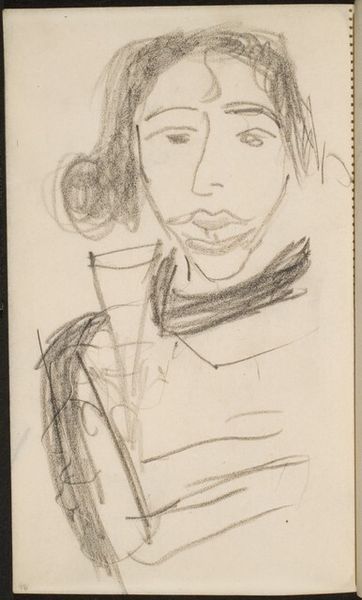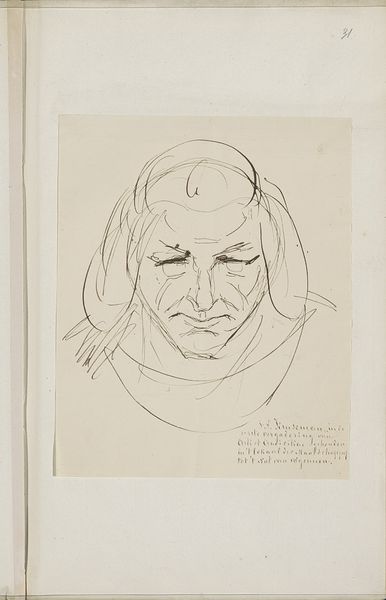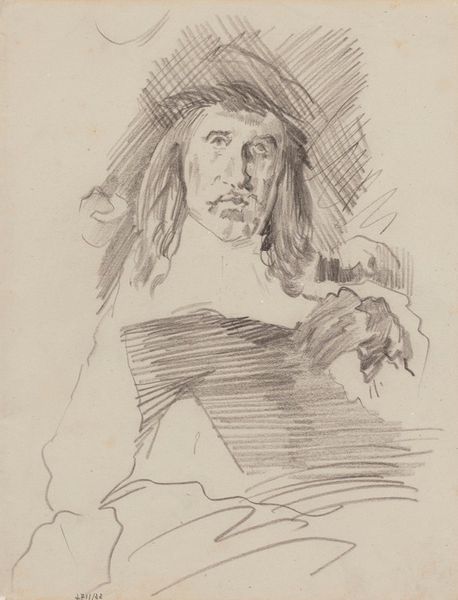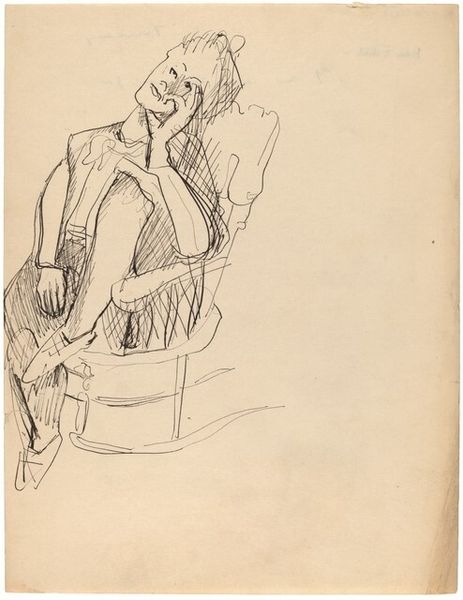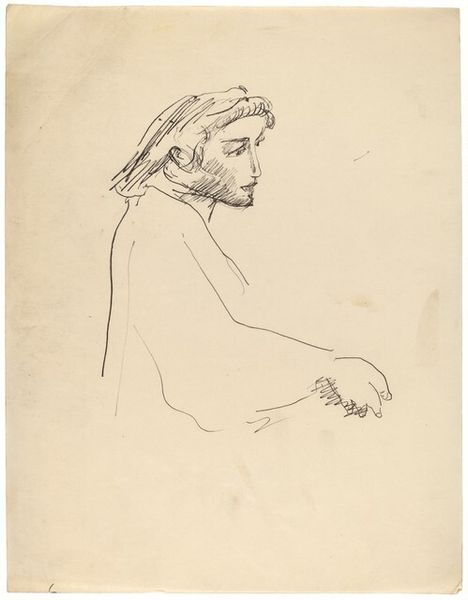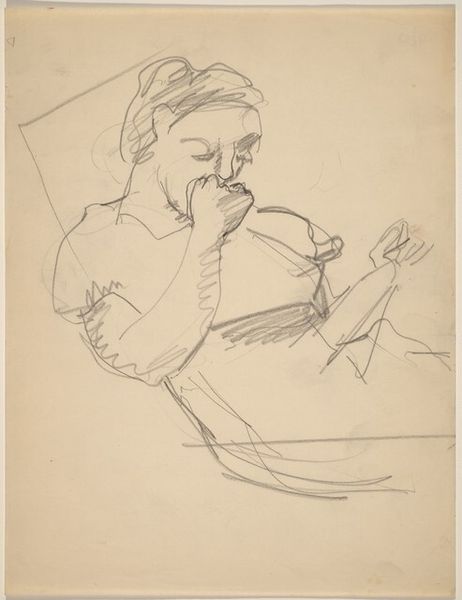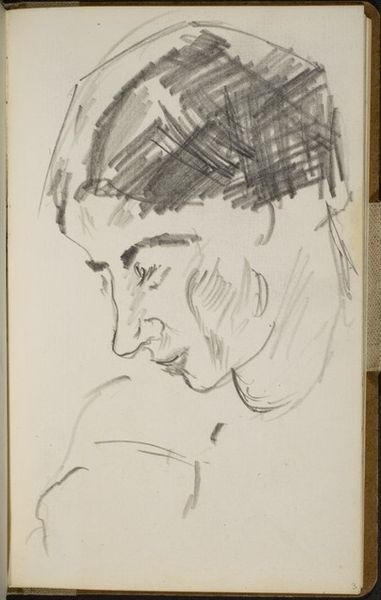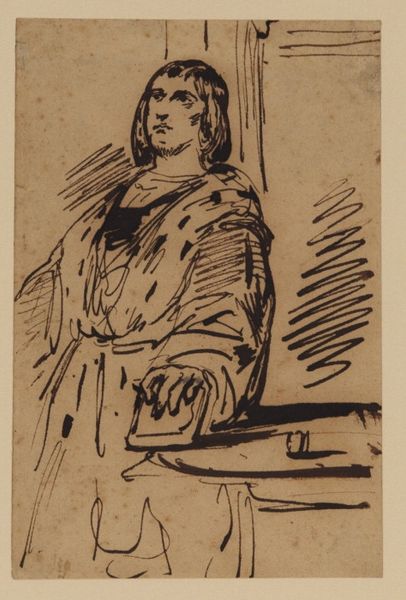![weibliche Bildnisstudie (Woman) [p. 23] by Max Beckmann](/_next/image?url=https%3A%2F%2Fd2w8kbdekdi1gv.cloudfront.net%2FeyJidWNrZXQiOiAiYXJ0ZXJhLWltYWdlcy1idWNrZXQiLCAia2V5IjogImFydHdvcmtzL2YwNGYyMTRhLTE4OWEtNGEwYy05YmE4LWI3MjQ4YjlkOWU2MC9mMDRmMjE0YS0xODlhLTRhMGMtOWJhOC1iNzI0OGI5ZDllNjBfZnVsbC5qcGciLCAiZWRpdHMiOiB7InJlc2l6ZSI6IHsid2lkdGgiOiAxOTIwLCAiaGVpZ2h0IjogMTkyMCwgImZpdCI6ICJpbnNpZGUifX19&w=1080&q=75)
Copyright: National Gallery of Art: CC0 1.0
Editor: Here we have Max Beckmann’s "Female Portrait Study," created sometime between 1944 and 1949, a pen sketch rendered with graphite and ink on paper. The gaze is strong but seems to be searching; there is a pensiveness and raw humanity there. What stands out to you? Curator: Pensive, yes! I'm immediately struck by the seeming contradictions layered in this seemingly simple sketch. See how the stark, almost harsh lines define her features, giving her a sort of unflinching presence? It is as if Beckmann is searching for some absolute essence of this person. But then, the incompleteness, the sketchiness... it suggests vulnerability, impermanence. He catches her looking inward, no mask, and maybe he sees something of himself? Don’t you get the sense he has stilled a thought or memory? Editor: That tension between raw honesty and hidden depth is compelling. You mention a searching quality, almost like he's using the sketch to understand something beyond just her physical appearance. Is that a reflection of the time, just after the war? Curator: Absolutely! He fled Germany, the Nazis labelled his work 'degenerate' ... He paints what he cannot cast off from his mind, but filtered. He’s laying bare something universal, a sort of quiet desperation mixed with resolve that feels so right for post-war Europe, or honestly, right for right now. What do *you* see in her eyes? Editor: I see a resilience, like she's witnessed something awful but isn't broken. So, even in its unfinished nature, the portrait suggests a powerful story. Thanks for shedding light on the emotional layers here. Curator: And thank you for prompting that journey! It reminds me how art really lives in that space between the artist’s intent and the viewer’s own story.
Comments
No comments
Be the first to comment and join the conversation on the ultimate creative platform.
